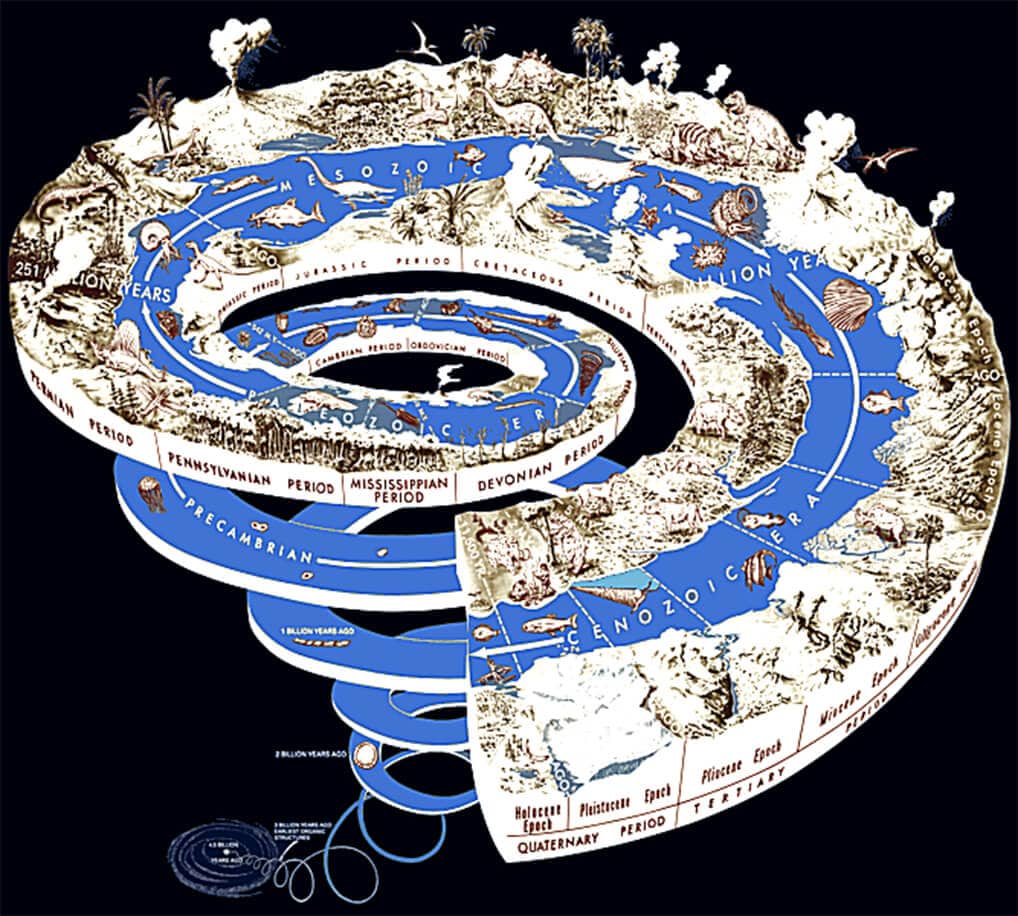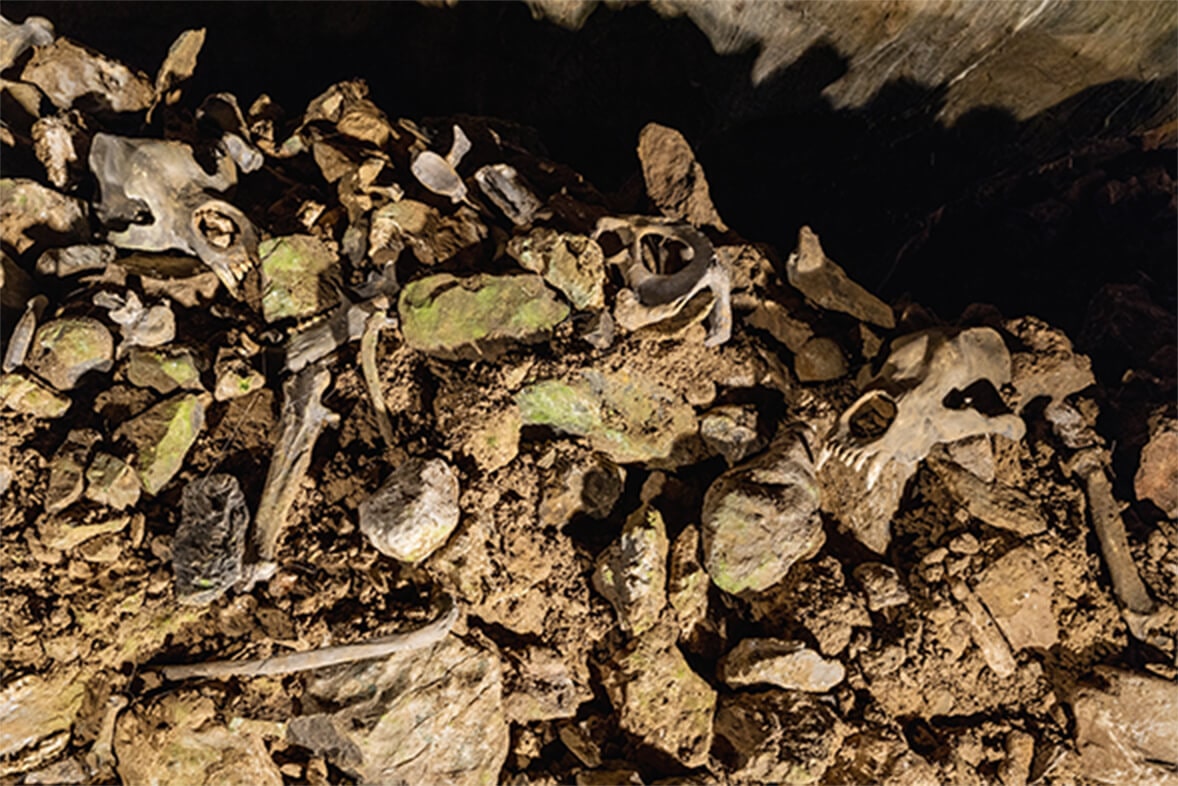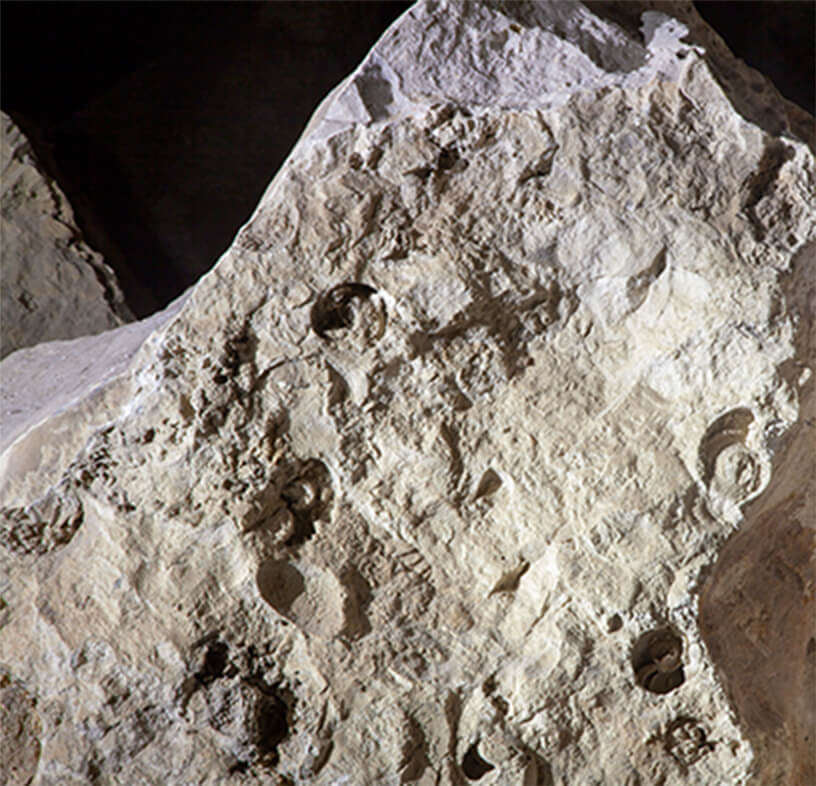Paleontology
What is Paleontology?
Paleontology is the science that studies the history of life on Earth based on the fossil record. Fossils are records of past life. A fossil is any naturally preserved remain, impression, or trace of any once-living thing from a past geological age. In some cases, bones and other materials are preserved but not altered. If conditions are right, minerals may replace the bodies/structures or impressions of plants, animals, and single-celled organisms like pollen and bacteria.
Why are fossils important?
Fossils give us clues to the history of life. Scientists unravel their physical structure, lives, and deaths, giving us clues to the environments they lived in and how they changed over time. Fossils have allowed scientists to piece together the history of life on Earth over the last three billion years. This information helps us understand our fragile environment better, giving us a better chance to survive as a species.
The extinction of species is a natural phenomenon. It occurs when changes to the species’ environment happens faster than it can adapt. Environmental changes can occur naturally or be the result of some artificial or external changes. Extinctions have happened many times in the long history of our planet, Earth. For instance, at the end of the Permian Period (251 million years ago), 95% of the life forms known from fossil remains became extinct. That was a much bigger extinction than the famous one ending the Cretaceous Period 65 million years ago, which saw the disappearance of the dinosaurs. The cycles of species extinction and evolution allow us to tell the age of rocks by studying the fossils they contain. Fossils are the “arms” on our geological clock!

Cave Fossils
Why are fossils found in caves? Animals venture into caves for shelter, habitat, or in search of food. Most stay close to a cave’s entrance, but a few go further into the dark. These fossils include nocturnal mammals (for example, bats, opossums, and sloths), as well as snakes, and birds. Prehistoric humans also lived and sheltered in caves. Some animals, including humans, have fallen into caves with pit or sinkhole entrances and could not get out. Predators, such as cats and owls, bring in their prey. Lastly, bones and plants are washed into caves by streams, floods, and mudflows.
Why are some caves major fossil sites? Caves are relatively stable, closed environments in terms of temperature, humidity, and disturbance from plant growth, animals, wind, and most floods. Thus, they preserve plant and animal remains for thousands to millions of years. Surface sites, on the other hand, are subject to weathering and erosion.


Age of Cave Fossils
Caves are usually short-lived geological features. Most caves present today formed since the start of the Miocene Epoch, 23 million years ago. No matter the age of a cave, cave fossils provide a snapshot of surface ecosystems at the time they were deposited. Within the Pleistocene Epoch, commonly called the “Ice Age,” the world experienced dramatic environmental changes from the time it began 2.6 million years ago to when it ended 10,000 years ago. About 20 significant cycles of glacial advances and retreats occurred during the Pleistocene. These cycles resulted in the extinction of 30 types of animals that included large mammals such as mammoths, mastodons, giant ground sloths, saber-tooth cats, giant armadillos, flat-headed peccaries, dire wolves, and short-faced bears.
What do cave fossils tell us?
All fossils tell us something about the evolutionary history of animals and plants and their geographic distribution. Cave fossils are especially important for two main reasons. First, caves preserve the remains of small animals, which are often specific indicators of past environments at particular geologic time periods. This information is useful because it is more exact; large animal species tend to occur for more extended periods. Second, because many animals will shelter or bring food into caves, caves fossils also tell us about past ecosystems, environments and even past human activity.
What does a Cave Paleontologist do?
Paleontologists plan, direct, and conduct fieldwork, searching for fossils or collecting samples. For the paleontologists who specialize in caves, their studies take place inside caves, and they do not work alone, so they must also plan cave expeditions for their teams. Once on-site, the scientists precisely document the cave passages and fossil locations and may take core samples from speleothems, soil, or cave walls. They preserve the specimens and prepare them for transport to the institution where they’ll be cleaned and studied. Their work continues in laboratories, analyzing their samples, using chemical techniques, and powerful microscopes.
Like other scientists, cave paleontologists share their research by writing peer-reviewed reports or journal articles and presenting them to colleagues at professional conferences. These studies uncover mysteries of past life and Earth’s history. Scientists in other disciplines use these data to understand and sustainably manage modern environments, including the ones in which we live.